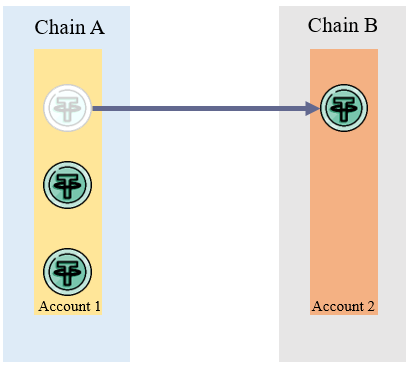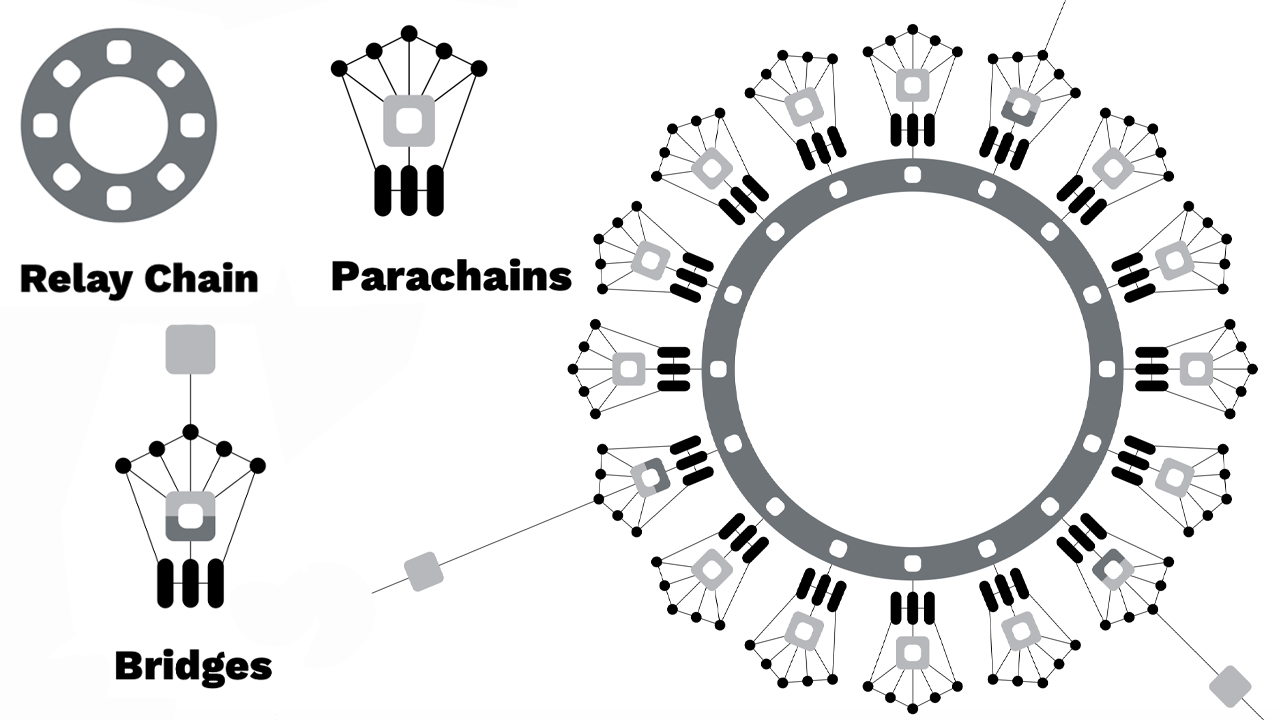Blockchain Interoperability - A Gentle Introduction
The final boss to blockchain mass adoption
If you were to survey the entire Crypto community on what is needed to make Blockchain technology more mainstream you would probably get the same amount of answers as people you asked. Some would say improvements to onboarding are critical, others might feel that improvements in the UX are the true key. You would probably also get a few people banking on Ethereum moving to Proof of Stake being the silver bullet to the path of glory. We all know those types.
The correct answer is, of course, blockchain interoperability. Right?
Introduction
Interoperability might be a tricky word to say 5 times fast and even a tricker word to type out over and over again (thank you spell check!). But what does it mean?
The earliest definition comes from Peter Wenger who defines interoperability as the "ability of two or more software components to cooperate despite differences in language, interface, and execution platform" (Wenger, 1996).
You might not have known the exact definition of interoperability but you have experienced its benefits as all modern-day communication is built on top of this concept. The fact that you can access this page on the browser of your choice through the series of TCP/IP protocols is a testament to the power of interoperability (Blockchain Interoperability, n.d.). Imagine a world where this article was only available via Microsoft Edge and if you wanted to view it on Brave then I would need to send it through a specific proxy and destination network for any Brave users to access it. That would be a nightmare.
This is not a world I want to live in but sadly this is the state of affairs when working across different blockchains. Seamlessly and securely transferring assets across blockchains for example an NFT on Ethereum to Solana remains a mountain to be conquered.
Why is it important?
While we all like to be in team ETH or team SOL on Twitter, in reality, we shouldn't need to be this tribal and this fragmentation is only hurting the crypto community as a whole.
The reason behind this 'display name warfare' is primarily due to many blockchains being built as silos by design. Freely exchanging data and assets weren't inherently built into the original structures of the most popular blockchains.
As much as some might not like to admit it, different blockchains have their strengths and weaknesses. Whether it's a priority on decentralization, scalability, or security. Wouldn't it be great if depending on the asset or application being used, you could leverage certain chains based on their strengths?
If only asking the question was as easy as implementing the solution.
Why is it a challenge?
Blockchain Interoperability is a tricky (and some would say impossible) endeavor due to the very nature of blockchains. For interoperability to be achieved there are a few things that are required in a three-phase procedure (Belchior et al., 2021):
1) Source Blockchain - this is where the initial transaction will be initiated. 2) Target Blockchain - this is where the transaction will be finally executed.
Step 1: Locking of the asset on the source Blockchain. This is needed to ensure that the record will not exist twice on the source blockchain and target blockchain.
Step 2: Committing the Transfer - we will explore later how different solutions handle this. Some may use a 3rd party or protocol to handle the transfer from source to target blockchain.
Step 3: Create a representation - now that the transfer is completed, that asset now needs to exist on the target blockchain.

For these steps to be performed, interoperability on both a technical integration level as well as covering any application-specific semantics between the two blockchains needs to be covered (Belchior et al., 2021) These challenges have been met with a few different approaches which have resulted in some interesting projects.
Three Different Approaches
There have been many ways to categorize Interoperability solutions, the most modern way is by dividing them into 3 types: Public Connectors, Blockchain of Blockchains, and Hybrid Connectors.(Belchior et al., 2021)
Public Connectors These types of solutions were the earliest attempts at providing blockchain interoperability between cryptocurrency blockchains. An example of this would be the notary schemes that are utilized by both centralized exchanges like Coinbase and decentralized exchanges like Uniswap. These schemes monitor for certain events, like the deployment of a smart contract, taking place on multiple blockchains which then trigger transactions between chains. (Belchior et al., 2021)
Blockchains of Blockchains To achieve interoperability, these solutions allow for the reusability of several layers of the blockchain including the data, network, consensus, incentive, and contract layers. These solutions typically operate with a secondary blockchain that is application-specific and interacts with the main blockchain as sort of a source of truth. (Belchior et al., 2021)
The two main examples of these are Polkadot and Cosmos. Polkadot consists of three levels - 2 infrastructure (Relay chain and Parachain) and a Bridge level. The Relay chain is Polkadot's main network and is where all transactions are finalized. The parachains are customized blockchains that operate independently for specific developer or business use cases. These parachains rely on the Relay chain to ensure the accuracy of transactions. Lastly, the bridge level allows for communication with other networks like Ethereum when needed. (ChangeNOW.io, 2021)

Cosmos is similar to Polkadot as it allows for independent blockchains to be running in parallel with each other. These blockchains can communicate with one another through the Inter-Blockchain Communication protocol (IBC). The IBC Protocol consists of a transport layer for security/authentication and an application layer for how data should be read by source and target blockchains.
Hybrid Connectors Hybrid Connectors achieve interoperability through the use of an abstraction layer that exposes a set of operations with which dApps can interact. The two primary approaches are through trusted relays and blockchain-agnostic protocols. (Belchior et al., 2021)
Trusted Relays are trusted third parties that act as redirectors for transactions from source to target blockchains. By having a complete view of blockchain operations via the abstraction layer, blockchain-agnostic protocols can provide accountability to transacting parties across multiple blockchains. You can think of these as sort of the prison guards watching over the prisoners in the guard tower.
Outside of these categories, there are exciting projects such as Chainlink which recently released the Cross-Chain Interoperability Protocol (CCIP) that enabled smart contracts across different blockchains to communicate and exchange data. Another is the Universal Passport from Nervos which is a suite of tools built on top of the Nervos CKB chain that enables "cross-chain circulation of assets".
Like most solutions in this space, blockchain interoperability is still an angry baby looking for the right bottle. Each approach offers a series of benefits and there is a body of research being conducted to make improvements. Rather than bashing each other for choosing the right or wrong crypto to maxi, solving the interoperability problem should be a top priority for those in the community. This is a final boss-level challenge on the path to greater blockchain adoption which everyone benefits from. Solving this will open up a never-ending tap of use cases to apply this beloved technology to. Together, forward.
Belchior, R., Vasconcelos, A., Guerreiro, S., & Correia, M. (2021). A Survey on Blockchain Interoperability: Past, Present, and Future Trends. ArXiv:2005.14282 [Cs]. arxiv.org/abs/2005.14282
Blockchain Interoperability: What Is it and Why Does it Matter? (n.d.). Retrieved February 3, 2022, from algorand.com/resources/blog/blockchain-inte..
ChangeNOW.io. (2021, November 18). Why Is Blockchain Interoperability The Future Of Cryptocurrency? The Capital. medium.com/the-capital/why-is-blockchain-in..
Gorbunov, S. (2022, February 3). Lessons Learned: The Internet’s Evolution as a Blueprint for Blockchain Interoperability [Blog]. Lessons Learned: The Internet’s Evolution as a Blueprint for Blockchain Interoperability; Nasdaq. nasdaq.com/articles/lessons-learned%3A-the-..
Wegner, P. (1996). Interoperability. ACM Computing Surveys, 28(1), 285–287. doi.org/10.1145/234313.234424

